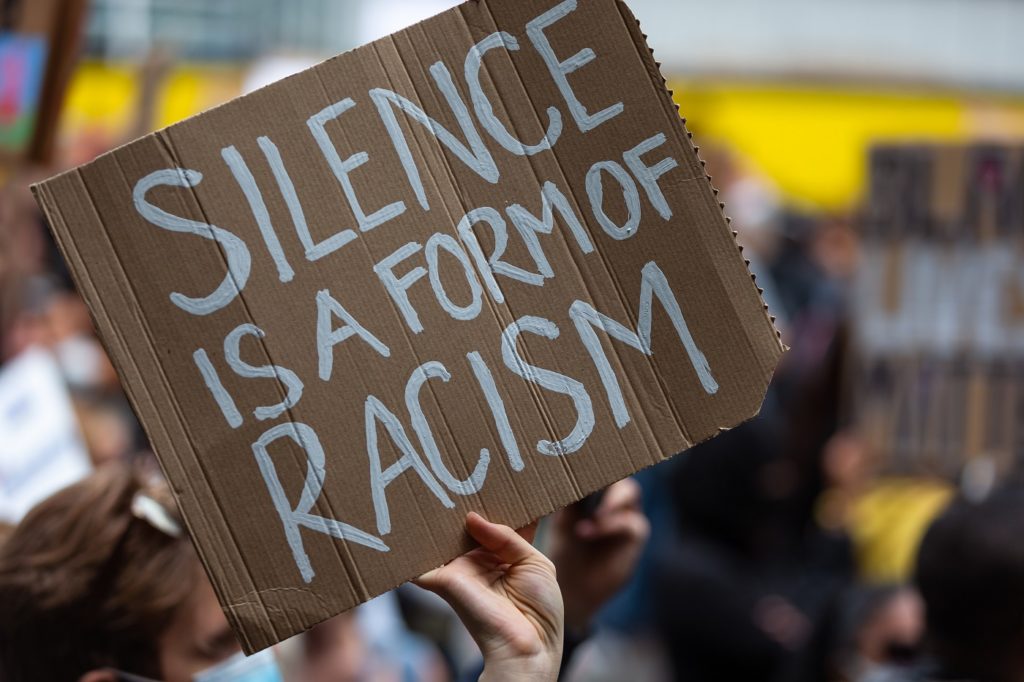The prevalence of racism on The Student Room website can be attributed to several factors. Firstly, the platform’s anonymity feature allows users to express opinions without fear of repercussion, emboldening some to propagate discriminatory views.
Additionally, inadequate moderation can permit racist content to persist unchecked. Deep-seated prejudices and biases among users, stemming from societal influences or personal experiences, also contribute to the problem. Furthermore, group dynamics within certain online communities may normalize or even encourage racist behavior.
Misinformation and ignorance about other cultures and ethnicities further perpetuate discriminatory attitudes. Finally, some individuals may engage in racist behavior for attention or amusement, exacerbating the issue.
What Are The Reasons for Racism on The Student Room Website?

The Student Room website, like any online platform, may unfortunately experience instances of racism due to various factors:
Anonymity
The anonymity provided by online platforms can create a sense of detachment from real-world consequences. When users don’t have to reveal their identities, they may feel more liberated to express extreme or offensive views, including racist sentiments.
So, this anonymity can reduce the social accountability that would normally deter such behavior in face-to-face interactions.
Lack of moderation
Effective moderation is crucial for maintaining a healthy online community. Without adequate moderation, racist comments and posts can go unaddressed, creating an environment where such behavior is tolerated or even encouraged.
Insufficient resources or inconsistent enforcement of community guidelines can exacerbate this problem, allowing racism to persist unchecked.
Prejudice and bias
Racism often stems from deeply ingrained prejudices and biases that individuals hold against people of different races or ethnicities.
Moreover, these prejudices may be learned from family, peers, or societal influences. They can manifest in various forms of discrimination, including online interactions on platforms like The Student Room.
Group dynamics
Online communities can develop their own norms and cultures, which may include acceptance or even encouragement of racist behavior within certain groups.
Individuals may feel pressure to follow these group rules or be influenced by their friends’ attitudes. This can lead them to express racist views or join in discriminatory discussions.
Misinformation and ignorance
Racism can also arise from misinformation, stereotypes, or a lack of understanding about other cultures, ethnicities, and races.
In addition, when users believe wrong things about certain racial or ethnic groups, they might say those things online without knowing they’re harmful or false. This shows why we need to teach people better and give them correct information. Platforms can help by talking openly and giving the right facts.
Provocation and trolling
Unfortunately, some individuals engage in racist behavior online purely for provocation or trolling. Some individuals on the platform may not genuinely hold racist beliefs but instead aim to provoke reactions or stir controversy for amusement. Such behavior can be particularly harmful as it contributes to a hostile and divisive online environment.
Impact of Racism on The Student Room Community
The impact of racism on The Student Room community can be significant and far-reaching, affecting individuals both directly and indirectly. Here are some key ways in which racism can impact the community:
Negative emotional effects
It can cause emotional distress and harm to those who are targeted or affected by it. Members of the community who experience racism may feel hurt, angry, marginalized, or isolated. These negative emotions can have a detrimental impact on their mental well-being and overall sense of belonging within the community.
Undermining inclusivity and diversity
Racism creates a hostile environment that undermines the principles of inclusivity and diversity within the community. When racist behavior is tolerated or goes unchecked, it sends a message that certain individuals or groups are not welcome or valued.
This can deter participation from marginalized or minority members, leading to a lack of diverse perspectives and voices within the community.
Conflict and division
It can fuel conflict and division within the community, pitting members against each other based on race or ethnicity. Tensions may escalate as individuals respond to discriminatory remarks or actions. This can lead to heated arguments, personal attacks, and a breakdown of civil discourse.
Further, this divisive atmosphere can erode trust and cohesion among community members, making it difficult to foster constructive discussions and collaboration.
Erosion of trust and safety
Racism undermines the sense of trust and safety that is essential for a healthy online community. When members experience or witness racist behavior without adequate intervention from moderators or community leaders, they may feel disillusioned and unsafe. This can undermine their trust in the platform and its ability to provide a supportive and inclusive environment.
This can lead to a loss of faith in the platform’s ability to protect its users and uphold its stated values. Consequently, some members may disengage or seek alternative communities where they feel more supported and respected.
Impact on reputation and credibility
Persistent issues of racism can tarnish the reputation and credibility of The Student Room as a reputable educational platform. Negative publicity surrounding racist incidents may deter prospective users from joining the community or participating in discussions.
Furthermore, it can also damage partnerships with educational institutions, organizations, and sponsors. They may be reluctant to associate themselves with a platform that harbors or tolerates racist behavior.
Missed opportunities for learning and growth
When racism is prevalent within the community, it detracts from its educational mission by inhibiting meaningful dialogue and learning opportunities.
Discussions may devolve into arguments or be dominated by offensive rhetoric, preventing constructive exchange of ideas and perspectives.
Moreover, this deprives members of the chance to broaden their understanding of diverse viewpoints. It also hinders their ability to engage in productive discourse on important issues related to education and beyond.
Potential Solutions To Address Racism In The Student Room

Addressing racism in The Student Room requires a multifaceted approach involving various stakeholders, including platform administrators, moderators, community members, and educational institutions. Here are potential solutions to combat racism on the platform:
Enforce clear community guidelines
Establish and enforce clear community guidelines that explicitly prohibit racist behavior, including hate speech, discriminatory language, and stereotyping. Ensure that these guidelines are prominently displayed and easily accessible to all users.
Implement robust moderation
Invest in sufficient resources and tools to effectively moderate the platform and promptly remove racist content.
Train moderators to identify and address instances of racism with consistency and transparency. Further, ensure they provide support and resources for users who experience or witness discriminatory behavior.
Empower community members
Encourage community members to actively report instances of racism and provide mechanisms for them to do so easily and anonymously.
Foster a culture of accountability where users understand their role in maintaining a respectful and inclusive environment. Encourage them to feel empowered to speak out against racism when necessary.
Promote education and awareness
Offer educational resources, training modules, and awareness campaigns to educate users about the impact of racism. Additionally, emphasizes the importance of cultural sensitivity and inclusion to promote a more inclusive community.
Provide information on recognizing and challenging implicit biases and stereotypes. In addition, offers resources for promoting diversity and understanding across different racial and ethnic backgrounds.
Foster dialogue and understanding
Facilitate constructive dialogue and engagement on issues related to race, ethnicity, and diversity. Create designated discussion spaces where community members can share their experiences, perspectives, and concerns in a respectful and supportive environment. Encourage active listening, empathy, and open-mindedness to promote understanding and bridge cultural divides.
Collaborate with educational institutions
Partner with educational institutions, student organizations, and diversity initiatives to integrate anti-racism efforts into formal education and outreach programs.
Offer workshops, seminars, and guest speaker events focused on addressing racism and promoting diversity and inclusion both online and offline.
Hold perpetrators accountable
Take decisive action against users who engage in racist behavior, including warnings, temporary suspensions, or permanent bans from the platform as appropriate.
Moreover, communicate clearly with the community about the consequences of violating community guidelines. This demonstrates a commitment to upholding standards of respect and dignity for all members.
Regularly assess and adapt strategies
Continuously monitor and evaluate the effectiveness of anti-racism efforts on the platform through data analysis, user feedback, and engagement metrics.
Also, regularly review and update policies, procedures, and resources based on insights gained from monitoring and feedback. This ensures ongoing progress and improvement in combating racism.
Final Words
Racism in The Student Room stems from anonymity, poor moderation, prejudices, group dynamics, ignorance, and attention-seeking behavior, constituting a complex issue.
Moreover, addressing these factors through proactive moderation, education, and fostering inclusivity is vital for creating a welcoming and respectful online community. By promoting understanding, empathy, and accountability, we can work together to combat racism and ensure that all users feel valued and respected.
Let’s aim to create a platform where diversity is celebrated. Everyone should be able to engage in constructive dialogue without fear of discrimination or prejudice.
